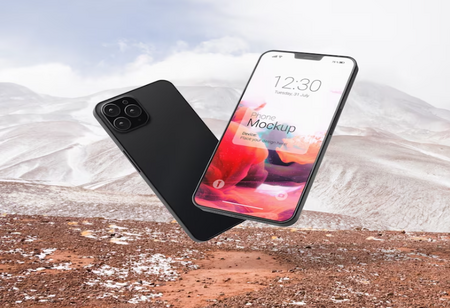By Consultants Review Team
 The most recent version of Apple's iPhone mobile operating system, iOS 17.3, has been launched. "Stolen Device Protection," which provides additional security measures to secure users' data if their phone is stolen, is one of the major new features. Enabling this is highly recommended for iPhone users as it enhances information security without requiring manual intervention.
The most recent version of Apple's iPhone mobile operating system, iOS 17.3, has been launched. "Stolen Device Protection," which provides additional security measures to secure users' data if their phone is stolen, is one of the major new features. Enabling this is highly recommended for iPhone users as it enhances information security without requiring manual intervention.
Your iPhone will restrict certain settings changes when turned on Stolen Device Protection if it isn't in a known area, such as your home or place of business. A burglar who unlocks your phone and tries to change these settings will have to first verify using Touch ID or Face ID. Thus, even with your passcode, they are unable to change protected settings without virtually difficult biometric duplication.
Extra verification will be needed for actions like accessing saved passwords or payment info in Safari, turning off Lost Mode, erasing the device, using the phone to set up a new Apple device, applying for a new Apple Card, viewing your Apple Card number, or transferring funds with Apple Cash.
A second line of defence for very sensitive data is a one-hour "security delay" that occurs when you use biometrics on an unfamiliar phone. Changes must be made using biometrics once the hour has passed. During this time of delay, your phone is still functional.
If you try to update Apple ID security settings, such as removing a trusted device, removing Face ID/Touch ID enrollment, changing your passcode, resetting settings, turning off Find My, or disabling Stolen Device Protection, you will experience a security delay. This delay could make it more difficult for thieves to swiftly take control of your phone or accounts.
Although a helpful new security measure, Stolen Device Protection does not completely secure all data in the event that your passcode is cracked. Although certain apps, like WhatsApp, allow you to add an additional PIN for access on top of your phone's passcode, it's still crucial to backup your data.
How to Enable Device Protection against Theft
You must have two-factor authentication setup for your Apple ID account and have the following installed on your iPhone in order to activate Stolen Device Protection:
– A device passcode
– Face ID or Touch ID
– Find My
– Significant Locations (Location Services)
Under Settings, you can activate Stolen Device Protection:
1. Go to Settings, then tap Face ID & Passcode.
2. Enter your device passcode.
3. Toggle on Stolen Device Protection.
And that's it! Now, the additional protections will be in effect. Make sure you update to iOS 17.3 to benefit from this helpful security update from Apple. Apple's action here is commendable since it strengthens already-in-place safeguards like passcodes. It isn't infallible, but it makes it more difficult for thieves to abuse stolen electronics. It is recommended that users make the most of the new feature.
We use cookies to ensure you get the best experience on our website. Read more...